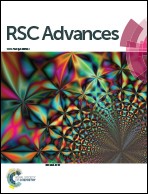In search of a docking protocol to distinguish between DNA intercalators and groove binders: genetic algorithm vs. shape-complementarity based docking methods
Abstract
While molecular docking protocols have been well parameterized for protein-ligand and even protein–protein interactions, there is a significant lack of similar procedures for DNA docking. The accuracy of DNA docking method/protocol is directly linked with the “selection” of a DNA receptor, that is, selecting a DNA receptor with or without an intercalation gap. A molecule, known experimentally to be a DNA groove binder will give many misleading docked conformations when attempted to dock into a DNA receptor containing an intercalation gap, and vice versa for an experimentally known DNA intercalating molecule that will similarly give misleading docked conformations when docked into a DNA receptor that does not contain an intercalation gap. Meaningful DNA docking studies, therefore, require a prior knowledge of “mode-of-binding” (intercalation or groove binding) of the ligand under investigation. This dilemma greatly limits the usefulness of DNA docking studies to search the known chemical libraries for new DNA groove binding or intercalating molecules. This study has been undertaken to investigate whether or not a docking protocol can be developed that will be able to reasonably sort out DNA intercalators from DNA groove binders without any prior knowledge of the mode-of-binding of the ligand.


 Please wait while we load your content...
Please wait while we load your content...